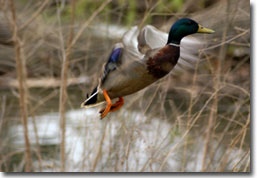Effective Immediately, visitors using Tar Bay WMA should be aware of ongoing marine construction in the area of Barren Island and Tar Bay. Visitors to the WMA should exercise caution to avoid all construction activities and marine vessels.
Click here to read about the Barren Island Construction Update, which includes marked safety zones and barge locations.

A 12-acre marsh island off the northeast end of Barren Island between Tar Bay and the Chesapeake Bay. Tar Bay WMA is a great spot for waterfowl hunters and birdwatchers.
What To See
Waterfowl, shorebirds, and wading birds.
What To Do
Most visitors come to Tar Bay WMA to try their hand at waterfowl hunting. The WMA is only accessible by boat via a county boat ramp at Fishing Creek off MD Rt. 335 just before the Fishing Creek Bridge onto Upper Hooper Island.
Area Regulations
- Use of Tar Bay WMA is generally permitted seven days a week throughout the year.
- Hunting is allowed in accordance with open seasons and shooting hours.
- All State and Federal Hunting Laws and Regulations are applicable.
- Trapping is by permit only.
- No motorized vehicles are allowed.
Non-hunting Users Guide
- Non-hunting visitors are welcome.
- Be aware of open hunting seasons and visit accordingly.
- Season dates available in newspapers, on the Internet, and at some area stores.
- Visitors to the management area should be aware that there may be biting flies, mosquitoes, and ticks present during April - November.
Site Management Goals
- Invasive species are being managed to protect the wetland habitat.
 Directions
Directions
From U.S. Route 50 in Cambridge, take MD Rt. 16 west to MD Rt. 335, then proceed south on MD Rt. 335 towards Hooper Island to the Fishing Creek boat ramp. For additional information, contact the LeCompte Wildlife Office at (410) 376-3236.
 Click Here for Map
Click Here for Map
This area is a part of Maryland’s Department of Natural Resources public land system and is managed by the Wildlife and Heritage Service. The primary mission of the WMA system is to conserve and enhance wildlife populations and their respective habitats as well as to provide public recreational use of the State’s wildlife resources.
Eighty-five percent of the funding for Maryland's state wildlife programs comes from hunting license fees and a federal excise tax on sport hunting devices and ammunition. The federal aid funds are derived from the Federal Aid in Wildlife Restoration (or Pittman-Robertson) Fund, which sportsmen and women have been contributing to since 1937. Each state receives a share of the funds, which is administered by the U. S. Fish and Wildlife Service; these funds are used for wildlife conservation and hunter education programs, including the management of the WMA system.
Other sources of funds for land acquisition include Program Open Space Funding for Maryland's State and local parks and conservation areas, provided through The Department of Natural Resources' Program Open Space. Established in 1969, Program Open Space symbolizes Maryland's long-term commitment to conserving natural resources while providing exceptional outdoor recreation opportunities.